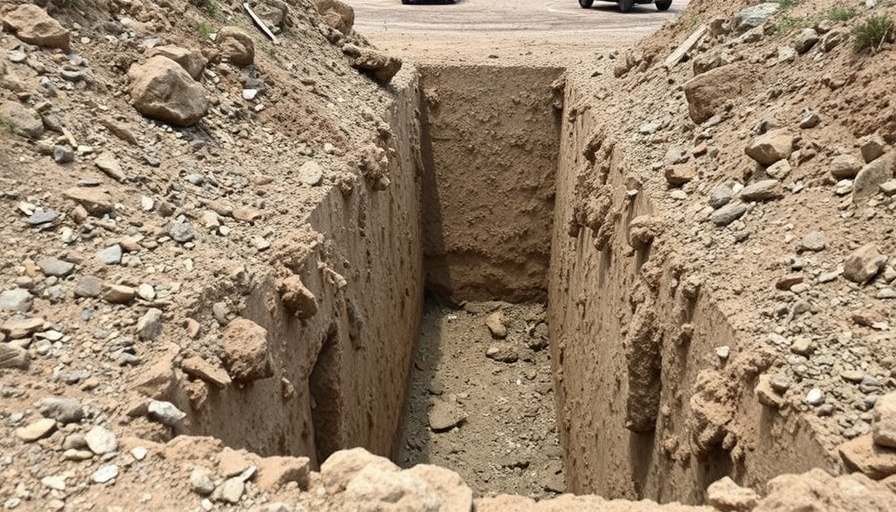
Understanding the Risks of Unsupported Trenches
The Mine Safety and Health Administration (MSHA) has recently issued a serious warning regarding the dangers associated with unsupported trenches following a tragic incident on January 3, where a miner lost his life due to a trench wall collapse. This unfortunate event highlights an alarming statistic: trench collapses are one of the leading causes of fatalities in excavation work, emphasizing the pressing need for awareness and adherence to safety protocols.
Best Practices for Trenching Safety
In their advisory, MSHA recommends several critical best practices designed to enhance safety during trenching operations. Most importantly, workers should maintain a safe distance from areas that are potentially unstable. Before commencing any excavation work, a thorough discussion about safe work procedures is essential to identify and mitigate hazards specific to that environment. For businesses involved in construction, understanding OSHA guidelines—which stipulate the use of protective systems for trenches five feet deep or more—can not only protect workers but also minimize operational costs associated with accidents and delays.
Why Safety Training is Essential
Implementing robust safety training programs is paramount for businesses, property developers, and facility managers engaged in excavation activities. By prioritizing safety training, organizations can ensure their workforce remains aware of best practices, thus enhancing productivity and reducing workplace injuries. Investing in ongoing safety education and drills can foster a culture of respect for safety standards, translating not only to compliance but also to improved morale among employees.
The Importance of Monitoring Excavation Sites
Understanding the environmental aspects surrounding excavation operations plays a significant role in preventing cave-ins. Regular monitoring of trench conditions, changes in weather, and soil stability can alert workers and management to potential hazards. Simple strategies, such as visual inspections and employing soil stabilization techniques, could significantly mitigate risks. These practices not only safeguard the workforce but also protect the financial interests of the company.
Responding to Emergencies Effectively
Even with the best preparations, emergencies can arise. Companies should have a clear and efficient emergency response plan tailored specifically for excavation work. This plan should include action steps for immediate response in case of a trench collapse, ensuring that all employees know their roles. Regularly practicing these protocols can save lives and minimize confusion during real emergencies.
Community Impact of Trenching Safety
The repercussions of trench collapses extend beyond individual fatalities. These incidents deeply affect families, the community, and the economy. For property developers and business owners, it is crucial to recognize that ensuring trench safety contributes not only to compliance but also to a reputation that underscores a company’s commitment to employee well-being and community safety. ADhering to safety regulations demonstrates corporate responsibility, which can strengthen relationships with clients and stakeholders.
A Call to Action for Employers
In light of these risks and responsibilities, business owners and construction firms must take proactive measures today to protect their workers. This includes conducting regular safety audits, ensuring compliance with MSHA and OSHA regulations, and providing comprehensive training programs. By doing so, employers not only safeguard their teams but also bolster their operational efficiency and reputation in the industry.
For managers and owners in construction, prioritizing excavation safety is not just a legal obligation—it is a moral one. Taking steps towards effective trench safety management is beneficial for your workforce and contributes positively to the industry as a whole.
 Add Row
Add Row  Add
Add 




Write A Comment